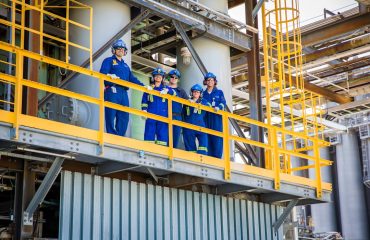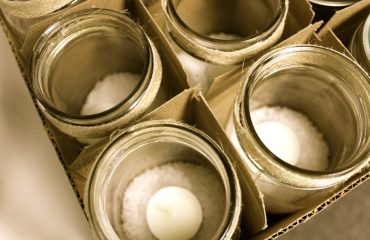body { font-family: sans-serif; line-height: 1.6; }
h1, h2, h3 { color: #333; }
img { max-width: 100%; height: auto; }
The reliability and longevity of any pipeline system hinge critically on the quality of its pipes. From intricate oil and gas transportation networks to crucial water distribution systems, maintaining consistent high standards is paramount. This necessitates robust and comprehensive pipe product quality control systems. This blog post delves into the multifaceted aspects of ensuring superior pipe quality, outlining the key stages and techniques involved.
1. Raw Material Inspection: The Foundation of Quality
The journey towards a high-quality pipe begins long before the manufacturing process. Rigorous inspection of raw materials is the cornerstone of effective quality control. This involves meticulous examination of the incoming steel, including chemical composition analysis, mechanical property testing (tensile strength, yield strength, elongation), and visual inspection for surface defects such as cracks, inclusions, and laminations. Spectrometers are commonly used for precise chemical analysis, ensuring the steel meets the specified grade and composition. Ultrasonic testing may be employed to detect internal flaws unseen by the naked eye. Detailed documentation of these inspections is crucial for traceability and accountability throughout the entire production process. Any deviation from the specified standards results in immediate rejection of the batch.
2. In-Process Quality Checks: Maintaining Consistency Throughout Manufacturing
Maintaining consistent quality isn’t a one-time event; it’s a continuous process. Throughout the manufacturing stages – from pipe forming (whether through rolling, extrusion, or other methods) to welding (for seamless or welded pipes) – regular quality checks are essential. These checks involve monitoring parameters such as temperature, pressure, and speed during the manufacturing process. Regular sampling and testing of work-in-progress pipes ensure that the manufacturing process remains stable and produces pipes that conform to the specified standards. Dimensional checks, using precision measuring instruments, are performed to verify that the pipes adhere to the specified outside diameter (OD), inside diameter (ID), wall thickness, and length tolerances. Any inconsistencies detected are immediately addressed to prevent further defects.
3. Dimensional Accuracy: Ensuring Precision and Fit
Precise dimensional accuracy is critical for ensuring proper pipe fitting and preventing leaks. Deviations from specified dimensions can compromise the structural integrity of the pipeline and lead to costly repairs or replacements. Modern pipe manufacturing utilizes advanced measuring techniques, such as laser scanning and coordinate measuring machines (CMMs), to ensure high accuracy. These methods allow for rapid and precise measurement of the pipe’s dimensions, providing detailed data on any deviations from the specified tolerances. Statistical process control (SPC) techniques are often employed to monitor dimensional variations over time and identify potential sources of error in the manufacturing process. This ensures that the pipes meet stringent dimensional requirements and are suitable for their intended application.
4. Pressure Testing: Verifying Structural Integrity
Once the pipes are manufactured, they undergo rigorous pressure testing to verify their structural integrity and ability to withstand the operating pressures of the intended application. This involves subjecting the pipes to pressures significantly higher than their expected working pressure. The test pressure and duration are determined based on the pipe’s material, diameter, wall thickness, and intended application. Leakage detection systems are used to identify any weaknesses or defects in the pipe’s structure. Pressure testing is a crucial step in ensuring the safety and reliability of the pipeline system, preventing catastrophic failures and ensuring the safe transport of fluids or gases.
5. Non-Destructive Testing (NDT): Unveiling Hidden Flaws
Non-destructive testing (NDT) methods play a vital role in identifying hidden flaws that might not be detectable through visual inspection or pressure testing. Several NDT techniques are employed, including ultrasonic testing (UT), radiographic testing (RT), magnetic particle testing (MT), and liquid penetrant testing (PT). UT uses high-frequency sound waves to detect internal flaws, while RT uses X-rays or gamma rays to create images of the pipe’s interior. MT is used to detect surface and near-surface cracks in ferromagnetic materials, and PT reveals surface-breaking defects by drawing a penetrating liquid into the crack. The choice of NDT method depends on the specific material, pipe size, and type of defect being sought. NDT provides a crucial layer of assurance, ensuring that only pipes free from critical flaws enter the pipeline system.
Implementing a robust pipe product quality control system is an investment in safety, reliability, and long-term cost savings. By combining meticulous raw material inspection, continuous in-process checks, precise dimensional control, thorough pressure testing, and advanced NDT techniques, manufacturers can ensure the delivery of high-quality pipes that meet or exceed industry standards. This ultimately leads to safer, more efficient, and longer-lasting pipeline systems.
SEO Keywords:
Pipe Quality Control, Pipe Manufacturing, NDT Pipe Testing, Pressure Testing Pipes, Pipe Inspection




